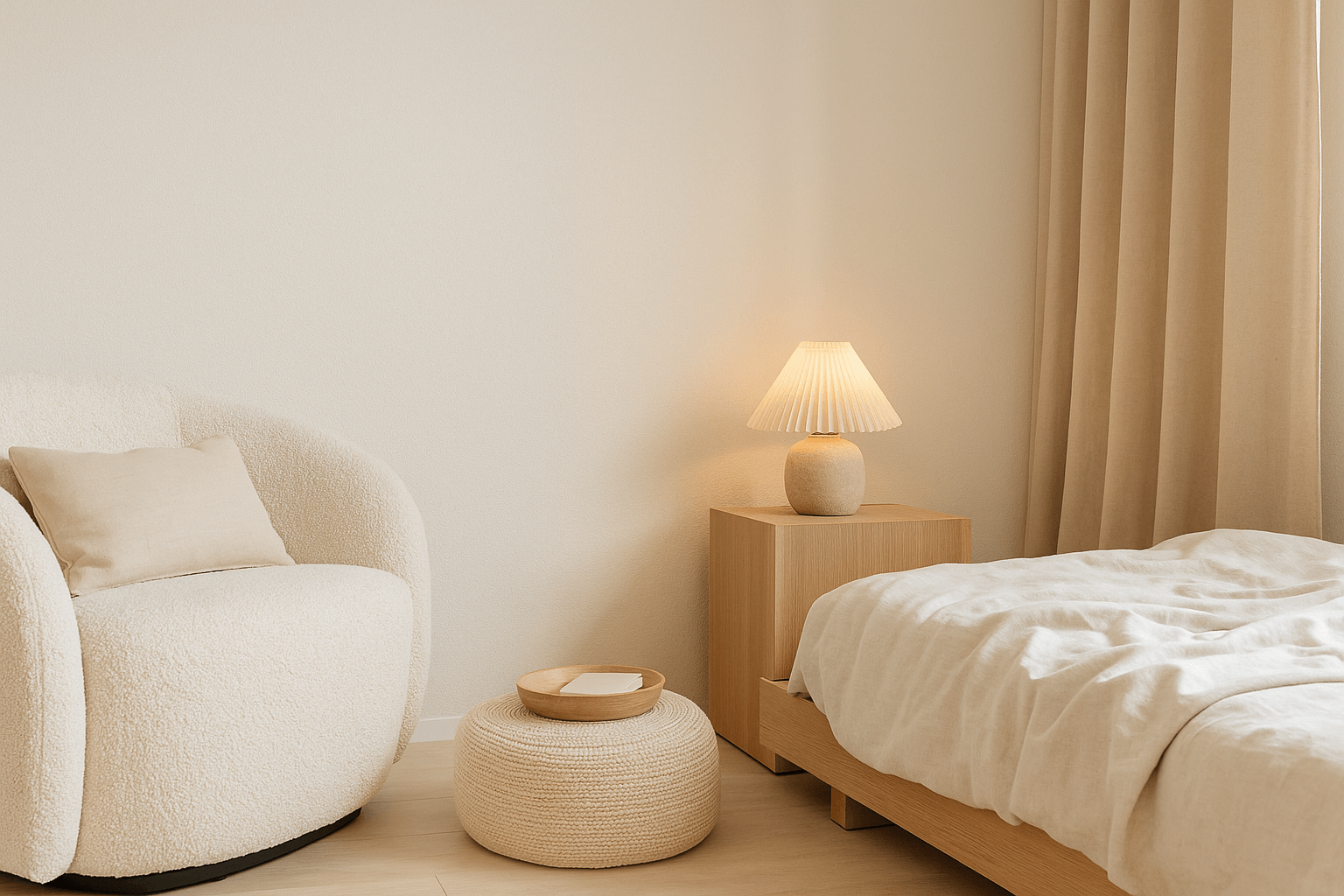Minimalism Isn't Just About Light
Light often takes center stage in design—but shadow is what gives light its shape. In minimalist interiors, where clarity and restraint are essential, shadow becomes a quiet yet powerful tool. It softens, grounds, and adds contrast without adding clutter.
Designing with shadow isn’t about darkness—it’s about depth.
What Shadow Brings to a Minimalist Space
-
Soft contrast without chaos
-
Mood without materials
-
Dimensionality without decor
-
Time-awareness through changing light and dark
Shadow introduces stillness, rhythm, and an emotional pull—without needing more objects.
How to Design With Shadow in Mind
1. Choose Directional Lighting
Use lamps and sconces that direct light purposefully. Let some areas glow, while others fade gently into shadow. This invites the eye to slow down.
2. Embrace Imperfect Light
Don’t aim for full brightness. Let corners stay dim. Let natural light fall unevenly. Shadow is what gives light room to breathe.
3. Use Sculptural Forms
Shadows become more interesting when they play against curves, folds, and texture. Choose furnishings with form, not just function.
4. Let Walls Be Bare
A bare wall becomes a canvas for shifting shadow. Instead of adding more decor, let the light change throughout the day to decorate it for you.
5. Think of Shadow as Presence
Shadow isn’t absence. It’s mood. It’s privacy. It’s the space that holds stillness. In a world of visual noise, a dim corner becomes a form of rest.
Shadow and Emotion
-
A quiet corner in soft dusk light
-
A folded throw casting a subtle shadow
-
A curved lamp making soft movement on the wall
These moments invite introspection. They give you a place to land.
Final Thoughts
In minimalist design, we often focus on clarity and brightness. But shadow is what gives the room weight, calm, and soul.
Design for the places light doesn’t reach. Let them be soft, not sharp. Still, not silent.
Shadow completes the room. It gives it mood, motion, and mystery—without adding a single thing.
















